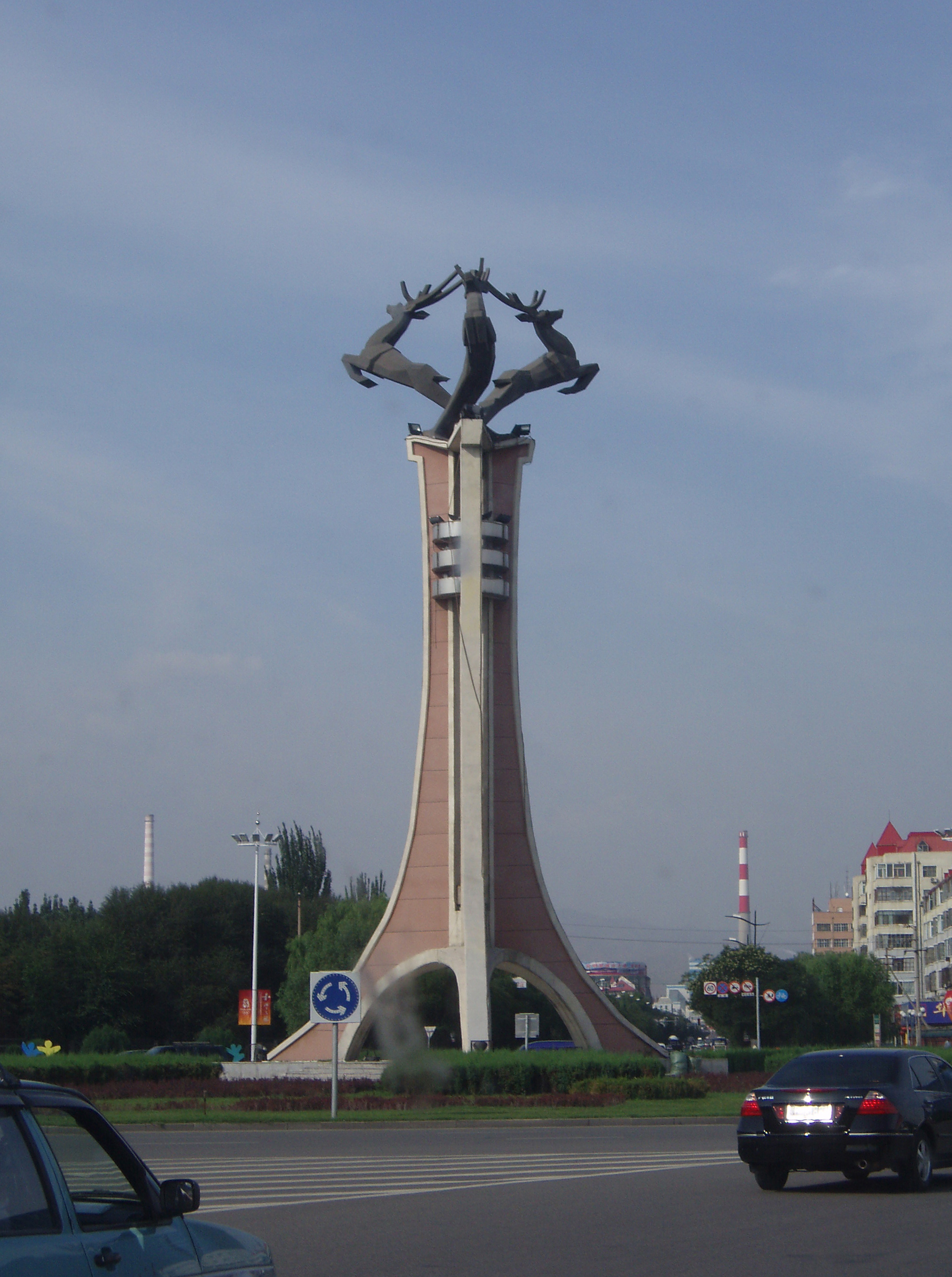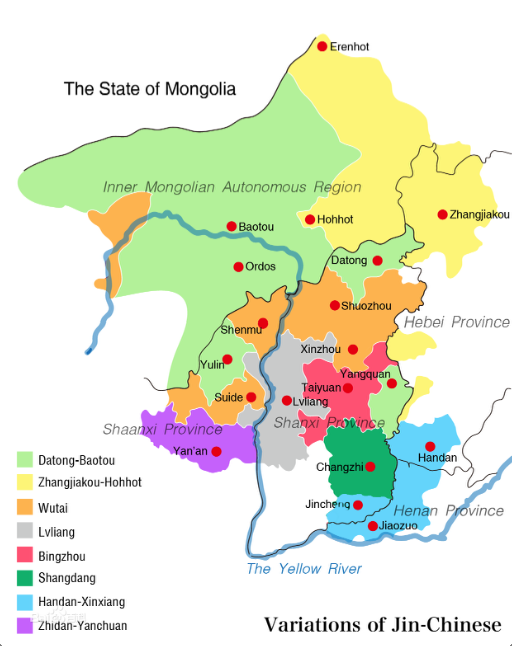|
Baotou
Baotou; is the largest city by urban population in Inner Mongolia, China. Governed as a prefecture-level city, as of the 2020 census, its built-up (''or metro'') area made up of its 5 urban districts is home to 2,261,089 people with a total population of 2,709,378 accounting for counties under its jurisdiction. The city's namesake, literally translated to "place with deer", is of Mongolic origin or "Lucheng" ( zh, c=鹿城 , p=Lùchéng), meaning "City of Deer". Alternatively Baotou is known as the "City of Steel in Gobi" ( zh, labels=no, s=草原钢城 , p=Cǎoyuán Gāngchéng). Steel was a major industry in the city. Today, Baotou refines over half of the rare-earth minerals produced in the world. This has led to environmental contamination near the industrial sites. History Ancient times The area now known as Baotou was inhabited by nomads, some of whose descendants would later be categorized as Mongols. Near the end of the Han dynasty (206 BC–220 AD), Lü Bu, a partic ... [...More Info...] [...Related Items...] OR: [Wikipedia] [Google] [Baidu] [Amazon] |
Inner Mongolia
Inner Mongolia, officially the Inner Mongolia Autonomous Region, is an Autonomous regions of China, autonomous region of China. Its border includes two-thirds of the length of China's China–Mongolia border, border with the country of Mongolia. Inner Mongolia also accounts for a small section of China's China–Russia border, border with Russia (Zabaykalsky Krai). Its capital is Hohhot; other major cities include Baotou, Chifeng, Tongliao, and Ordos City, Ordos. The autonomous region was established in 1947, incorporating the areas of the former Republic of China (1912–1949), Republic of China provinces of Suiyuan, Chahar Province, Chahar, Rehe Province, Rehe, Liaobei, and Xing'an Province, Xing'an, along with the northern parts of Gansu and Ningxia. Its area makes it the List of Chinese administrative divisions by area, third largest Chinese administrative subdivision, constituting approximately and 12% of China's total land area. Due to its long span from east to west, Inn ... [...More Info...] [...Related Items...] OR: [Wikipedia] [Google] [Baidu] [Amazon] |
Hohhot
Hohhot,; abbreviated zh, c=呼市, p=Hūshì, labels=no formerly known as Kweisui, is the Capital (political), capital of Inner Mongolia in the North China, north of the China, People's Republic of China, serving as the region's administrative, economic and cultural center.''The New Encyclopædia Britannica'', 15th Edition (1977), Volume I, p. 275. Its population was 3,446,100 inhabitants as of the 2020 census, of whom 2,944,889 lived in the metropolitan area consisting of 4 urban districts (including Hohhot Economic and Development Zone) plus the Tumed Left Banner. The name of the city in Mongolian means "Blue City", although it is also wrongly referred to as the "Green City."Perkins (1999), p. 212. The color blue in Mongol culture is associated with the sky, eternity and purity. In Chinese, the name can be translated as ''Qīng Chéng'' ( zh, c=青城 , l=Distinguishing blue from green in language#Chinese, Blue/Green City) The name has also been variously romanized as Kokota ... [...More Info...] [...Related Items...] OR: [Wikipedia] [Google] [Baidu] [Amazon] |
Jiuyuan District
Jiuyuan District ( Mongolian: ; zh, s=九原区) is a district of Baotou, the largest city of Inner Mongolia, China. Administrative divisions Jiuyuan District is made up of 4 subdistricts, 3 towns A town is a type of a human settlement, generally larger than a village but smaller than a city. The criteria for distinguishing a town vary globally, often depending on factors such as population size, economic character, administrative stat ..., and 1 sum. References www.xzqh.org County-level divisions of Inner Mongolia {{InnerMongolia-geo-stub ... [...More Info...] [...Related Items...] OR: [Wikipedia] [Google] [Baidu] [Amazon] |
Meidaizhao Monastery
Meidaizhao Monastery or Meidaizhao Lamasery () is a Buddhist temple, Tibetan Buddhist temple located in Tumed Right Banner, Baotou, Inner Mongolia, China. Name "Zhao" () means "monastery" in Tibetan language. History After the fall of the Yuan dynasty (1271–1368), the Mongols retreated to the north, historically known as "Northern Yuan dynasty" (1368–1635). During the Longqing period (1567–1573) of the Ming dynasty (1368–1644), Altan Khan, the leader of a Mongolian tribe named Tumed, Tümed, was canonized as "King of Shunyi" () by the central government of the Ming Empire, and then he started to build monastery towns on mountains belonging to the Tümed. In 1575, the first monastery was completed, which was called "Shouling Monastery" () in the early Qing dynasty (1644–1911) and later was granted a name of "Fuhua Town" () by the government. In 1606, Erketü Qatun invited a Tibetan living Buddha named Maitreya Khutukhtu () to come to the prairie to ... [...More Info...] [...Related Items...] OR: [Wikipedia] [Google] [Baidu] [Amazon] |
Yellow River
The Yellow River, also known as Huanghe, is the second-longest river in China and the List of rivers by length, sixth-longest river system on Earth, with an estimated length of and a Drainage basin, watershed of . Beginning in the Bayan Har Mountains, the river flows generally eastwards before entering the long Ordos Loop, which runs northeast at Gansu through the Ordos Plateau and turns east in Inner Mongolia. The river then turns sharply southwards to form the border between Shanxi and Shaanxi, turns eastwards at its confluence with the Wei River, and flows across the North China Plain before emptying into the Bohai Sea. The river is named for the yellow color of its water, which comes from the large amount of sediment discharged into the water as the river flows through the Loess Plateau. The Yellow River basin was the birthplace of Yellow River civilization, ancient Chinese civilization. According to traditional Chinese historiography, the Xia dynasty originated on it ... [...More Info...] [...Related Items...] OR: [Wikipedia] [Google] [Baidu] [Amazon] |
Lü Bu
Lü Bu (; died 7 February 199), courtesy name Fengxian, was a Chinese military general, politician, and warlord who lived during the late Eastern Han dynasty of Imperial China. Originally a subordinate of a minor warlord Ding Yuan, he betrayed and murdered Ding Yuan and defected to Dong Zhuo, the warlord who controlled the Han central government in the early 190s. In 192, he turned against Dong Zhuo and killed him after being instigated by Wang Yun (Han dynasty), Wang Yun and Shisun Rui (), but was later defeated and driven away by Dong Zhuo's followers. From 192 to early 195, Lü Bu wandered around central and northern China, consecutively seeking shelter under warlords such as Yuan Shu, Yuan Shao, and Zhang Yang (warlord), Zhang Yang. In 194, he managed to take control of Yan Province from the warlord Cao Cao with help from defectors from Cao's side, but Cao Battle of Yan Province, took back his territories within two years. In 195, Lü Bu turned against Liu Bei, who had offere ... [...More Info...] [...Related Items...] OR: [Wikipedia] [Google] [Baidu] [Amazon] |
License Plate (China)
Vehicle registration plates in China are mandatory metal or plastic plates attached to motor vehicles in mainland China for official identification purposes. The vehicle registration plate, plates are issued by the local traffic management offices, which are sub-branches of local public security bureaus, under the rules of the Ministry of Public Security (China), Ministry of Public Security. Hong Kong and Macau, both of which are special administrative regions of China, issue their own licence plates, a legacy of when they were under British Hong Kong, British and Portuguese Macau, Portuguese administration. Vehicles from Hong Kong and Macau are required to apply for licence plates, usually from Guangdong province, to travel on roads in mainland China. Vehicles from mainland China have to apply for Vehicle registration plates of Hong Kong, Hong Kong licence plates or Vehicle registration plates of Macau, Macau licence plates to enter those territories. The font used are in the ... [...More Info...] [...Related Items...] OR: [Wikipedia] [Google] [Baidu] [Amazon] |
Jin Chinese
Jin () is a group of Chinese linguistic varieties spoken by roughly 48 million people in northern China, including most of Shanxi province, much of central Inner Mongolia, and adjoining areas in Hebei, Henan, and Shaanxi provinces. The status of Jin is disputed among linguists; some prefer to include it within Mandarin, but others set it apart as a closely related but separate sister group. Classification After the concept of Mandarin Chinese was proposed, the Jin dialects were universally included within it, mainly because Chinese linguists paid little attention to these dialects at the time. In order to promote Standard Mandarin in the early days of People's Republic of China, linguists started to research various dialects in Shanxi, comparing these dialects with Standard Mandarin for helping the locals to learn it more quickly. During this period, a few linguists discovered some unique features of Jin Chinese that do not exist in other northern Mandarin dialects, planting t ... [...More Info...] [...Related Items...] OR: [Wikipedia] [Google] [Baidu] [Amazon] |
Telephone Numbers In China
Telephone numbers in the People's Republic of China are administered according to the Telecommunications Network Numbering Plan of China. The structure of telephone numbers for landlines and mobile service is different. Landline telephone numbers have area codes, whereas mobile numbers do not. In major cities, landline numbers consist of a two-digit area code followed by an eight-digit local number. In other places, landline numbers consist of a three-digit area code followed by a seven- or eight-digit local number. Mobile phone numbers consist of eleven digits. Landline calls within the same area do not require the area code. Calls to other areas require dialing the trunk prefix ''0'' and the area code. The Special administrative regions of China, special administrative regions of Hong Kong and Macau are not part of this numbering plan, and use the calling codes +852, 852 and +853, 853 respectively. Mobile phones In mainland China, mobile phone numbers have eleven digits in ... [...More Info...] [...Related Items...] OR: [Wikipedia] [Google] [Baidu] [Amazon] |
Han Chinese
The Han Chinese, alternatively the Han people, are an East Asian people, East Asian ethnic group native to Greater China. With a global population of over 1.4 billion, the Han Chinese are the list of contemporary ethnic groups, world's largest ethnic group, making up about 17.5% of the world population. The Han Chinese represent 91.11% of the population in China and 97% of the population in Taiwan. Han Chinese are also a significant Overseas Chinese, diasporic group in Southeast Asian countries such as Thailand, Malaysia, and Indonesia. In Singapore, people of Han Chinese or Chinese descent make up around 75% of the country's population. The Han Chinese have exerted a primary formative influence in the development and growth of Chinese civilization. Originating from Zhongyuan, the Han Chinese trace their ancestry to the Huaxia people, a confederation of agricultural tribes that lived along the middle and lower reaches of the Yellow River in the north central plains of Chin ... [...More Info...] [...Related Items...] OR: [Wikipedia] [Google] [Baidu] [Amazon] |
Northeastern Mandarin
Northeastern Mandarin ( or / ''Dōngběiguānhuà'' "Northeast Mandarin") is the subgroup of Mandarin varieties spoken in Northeast China with the exception of the Liaodong Peninsula and few enclaves along Amur and Ussuri rivers. The classification of Northeastern Mandarin as a separate dialect group from Beijing Mandarin was first proposed by Li Rong, author of the ''Language Atlas of China'', in 1989. However, many researchers do not accept the distinction. Geographical distribution Northeastern Mandarin varieties are spoken in the northeastern part of China, in the provinces of Liaoning (except its southern part from Dalian to Dandong where Jiaoliao Mandarin is spoken), Jilin and Heilongjiang, and in some northern parts of Inner Mongolia. The number of speakers was estimated in 1987 as 82 million, and 98 million in 2012. The latter text also estimates that there are 37 million speakers in Heilongjiang, 26 million in Jilin, 28 million in Liaoning, and 6 million in Inner M ... [...More Info...] [...Related Items...] OR: [Wikipedia] [Google] [Baidu] [Amazon] |







